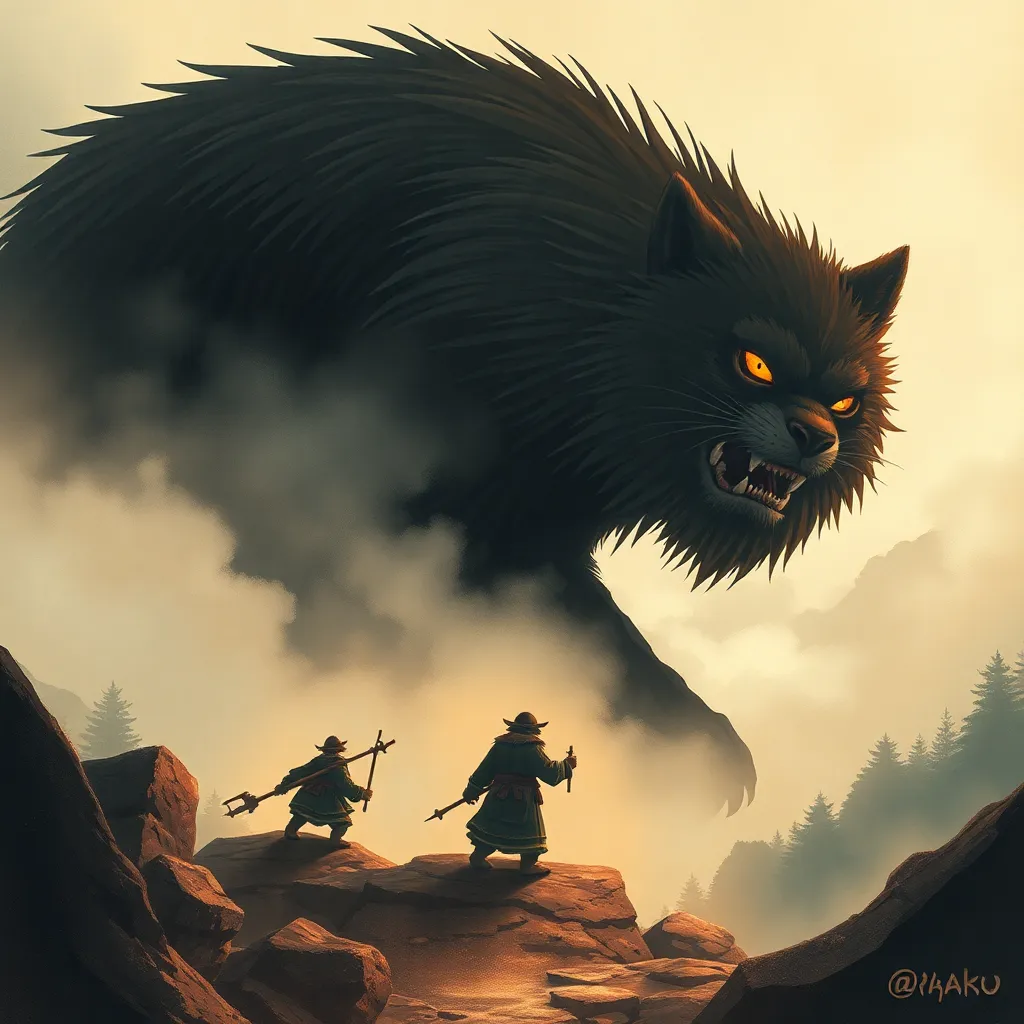The Tanuki and the Mountain: A Tale of Strength and Transformation
I. Introduction to the Tanuki
The Tanuki, a creature from Japanese folklore, is often depicted as a mischievous and playful figure. With the ability to shape-shift and transform, the Tanuki embodies the qualities of adaptability and cunning. In many stories, this creature is associated with various symbols, including prosperity and joy. As a trickster, the Tanuki serves to teach lessons about the nature of deception and the importance of wisdom.
In cultural narratives, the Tanuki holds a significant place, often appearing in tales that explore the themes of transformation and resilience. The stories are rich with allegorical meanings, where the Tanuki’s adventures reflect broader human experiences.
II. The Mountain as a Setting
The mountain, a prominent feature in Japanese landscapes, serves as a powerful setting in the tale of the Tanuki. It is often depicted as majestic, towering, and filled with ancient trees and hidden paths. This natural wonder is not only a backdrop but also a symbol of strength, endurance, and the challenges one must face in life.
Nature plays a crucial role in Japanese mythology, with mountains often seen as sacred places where gods reside. They are considered to be living entities, holding deep spiritual significance. In this tale, the mountain acts as a character in its own right, providing both obstacles and wisdom to the Tanuki on its journey.
III. The Journey Begins
As the story unfolds, we meet the Tanuki, a creature filled with longing and desire for adventure. Initially, the Tanuki is restless and unsatisfied with its mundane existence. Eager for change, it sets out toward the mountain, dreaming of greatness and transformation.
The Tanuki’s journey represents a quest for identity and purpose, setting the stage for the transformations to come. The mountain looms ahead, promising both challenges and the potential for growth.
IV. Trials and Challenges
As the Tanuki ascends the mountain, it encounters a series of trials that test its resolve. These challenges include treacherous terrain, fierce storms, and encounters with other mystical creatures that embody various aspects of nature.
- Physical Challenges: Navigating steep cliffs and rocky paths.
- Emotional Trials: Confronting fears and insecurities that arise during the journey.
- Social Obstacles: Interactions with other beings that challenge the Tanuki’s cleverness.
The mountain plays a significant role in these trials, presenting obstacles that force the Tanuki to dig deep and learn valuable lessons about perseverance and humility.
V. The Moment of Transformation
Amidst the challenges, a pivotal event occurs that catalyzes the Tanuki’s transformation. In a moment of crisis, when all seems lost, the Tanuki taps into an inner strength that it did not know it possessed. This moment of realization comes during a fierce storm, where the Tanuki must use both cunning and courage to survive.
Through this experience, the Tanuki grows stronger and more resilient, learning that true power comes from within. The mountain, once seen as an imposing force, now serves as a mentor, guiding the Tanuki toward self-discovery and empowerment.
VI. The Symbolism of Strength
The tale of the Tanuki explores the duality of strength, emphasizing the importance of both physical prowess and inner fortitude. While the mountain represents the external challenges that test one’s limits, the Tanuki’s journey highlights the significance of emotional and mental resilience.
By embodying qualities such as:
- Resilience: The ability to bounce back from setbacks.
- Adaptability: The capacity to adjust to new circumstances.
- Courage: The bravery to face fears and uncertainties.
The Tanuki becomes a symbol of hope and determination in folklore, illustrating that strength is not merely about physical capability but also about enduring spirit.
VII. The Return Home
After overcoming the trials and achieving transformation, the Tanuki begins its journey back home. This return is not just a physical journey but also a metaphorical one, reflecting a shift in the Tanuki’s perspective on both the mountain and itself.
Now, the Tanuki views the mountain with reverence, recognizing it as a source of strength rather than an obstacle. This change in perspective signifies personal growth and a deeper understanding of life’s challenges.
As the Tanuki returns, it carries with it the lessons learned during the journey, ready to share its newfound wisdom with others.
VIII. Conclusion: Lessons from the Tale
The story of the Tanuki and the mountain serves as a rich tapestry of themes centered around strength and transformation. It encourages readers to reflect on their own journeys and the obstacles they face in life.
In contemporary culture, the Tanuki continues to resonate as a symbol of resilience, adaptability, and the ability to embrace change. The mountain, too, remains a powerful metaphor for life’s challenges, reminding us that growth often comes from overcoming adversity.
Ultimately, this tale inspires us to embrace change, learn from our struggles, and recognize the strength that lies within each of us.



